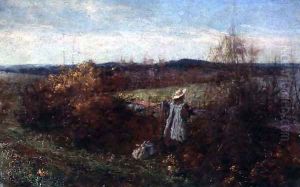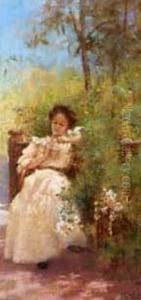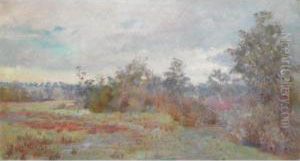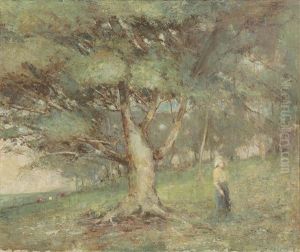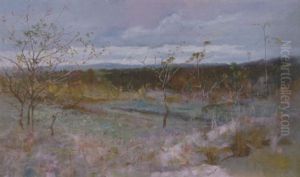Jane Sutherland Paintings
Jane Sutherland was an Australian artist born on December 26, 1853, in New York, United States. Her family moved to Australia in 1864, where she grew up and would later become a significant figure in the Australian Impressionist movement. She was one of the few female members of the Heidelberg School, a group of artists who played a pivotal role in the development of Australian art by promoting an Australian-centric style that was distinct from European traditions.
Sutherland trained at the National Gallery of Victoria Art School, where she was influenced by teachers such as Frederick McCubbin and George Folingsby. Despite the challenges faced by women artists at the time, Sutherland managed to carve out a successful career. Her work often focused on the Australian bush, capturing the light, atmosphere, and color of the landscape in a way that was innovative for the time. She was particularly adept at depicting scenes of rural life and was a sensitive observer of the natural world. Her painting 'The Mushroom Gatherers' is one of her most recognized works and is considered a fine example of Australian Impressionism.
Sutherland was also an advocate for women artists and was involved in organizations that aimed to advance the careers of women in the arts. She maintained her career despite the social expectations placed upon women of her era, which often discouraged professional artistic careers for women. Sadly, her work was somewhat overlooked after her death on October 25, 1928, but in recent years, there has been a resurgence of interest in her contributions to Australian art and her role as a pioneering female artist in the country's history. Sutherland’s paintings are now held in several Australian public collections, including the National Gallery of Victoria and the Art Gallery of New South Wales.
